

 |
|
|
An Online Newsletter Showcasing Our Programs for the Month of April 2025! |
|
|
As we kick off the 2025 Fiscal Year, we’re excited to launch a full slate of events at our center in the heart of the Miracle Mile. Starting this Friday, we are thrilled to partner with the Yanai Initiative at Japan House Los Angeles for a captivating Japanese spoken theater performance. This will be followed by our upcoming exhibition on Japanese coffee culture, which will be on display through June. In addition to these, we have a diverse lineup of both online and in-person lectures exploring various aspects of Japanese culture. Topics include Kami Worship, HAI/KYO Architecture, Kyoto’s Silk Textile Makers, and Early Western Imagery from Ryukyu. On the educational front, we are offering Japanese language classes this month, available both online and in person. If you're interested in learning, be sure to sign up! We’ll also be hosting our popular Tea-Time event at Cal State Fullerton. And don't forget, the deadline for our Salary Assistant Grant for the 2025/26 school year is this month. Whether you're interested in Japanese Arts & Culture or Language, there's something for everyone, and we can't wait to welcome you to one of our upcoming events! One quick note: We've noticed that Google Maps has been incorrectly marking our location. Please make sure your search directs you to Mid-Wilshire, between Masselin and S Curson Ave. The entrance is located on Courtyard Place. You can find a map and street view of our building below for easy reference.
|
|
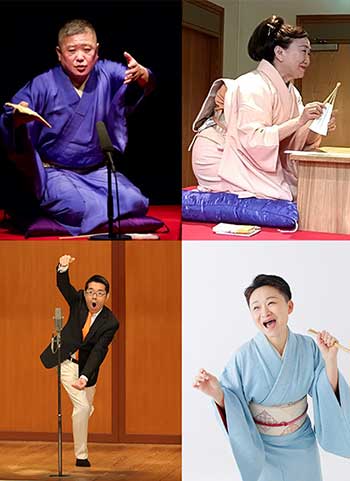 |
PERFORMING ARTS In partnership with the Yanai Initiative for Globalizing Japanese Humanities and with the support of JAPAN HOUSE Los Angeles, The Japan Foundation, Los Angeles, is proud to offer an intimate evening of four Japanese spoken theater performances. Four master performers will showcase their unique approaches to three types of storytelling. San'yūtei Hakuchō and Ryūtei Komichi will each perform rakugo, a comic narrative with multiple characters played by one performer. Edoya Nekohachi will recreate the sounds of common and rare animals through monomane, or mimicry, following the 120-year Edoya tradition. And Kanda Yōko will perform kōdan, an oral tradition that reimagines famous events as fantastic tales. Introductory remarks will be provided by Dr. Satoko Shimazaki, Associate Professor of Asian Languages and Cultures at UCLA. This tour was produced by Momoe Melon and organized by the Yale MacMillan Center Council on East Asian Studies under the guidance of Professor Aaron Gerow of Yale University. With stops at Yale University and the University of Chicago, this production will present a rare opportunity for people in Los Angeles to experience Japanese spoken theater performed by renowned entertainers from Japan.
|
 |
DESIGN EXHIBITION Opening Reception
Coffee culture is currently in a “third wave” that emphasizes an artisanal approach to the beverage by considering the source of the coffee bean, its level of roasting, and the method of brewing. There are various ways to brew coffee, each of which involves a particular tool and technique. Perhaps the most popular brewing tool is the dripper, and the best-known examples are produced by companies in Japan. But why, if Japan is traditionally associated with tea, is this the case? It can be argued that Japan’s tea culture is the foundation upon which Japanese coffee culture flourished to its current form. Music and entertainment from the West had been integrated into Japanese popular culture alongside coffee, resulting in social establishments such as the coffee-focused kissaten. This exhibition, organized in collaboration with Kurasu, explores the effects that coffee has had on Japan and, simultaneously, the extraordinary contributions that Japan has made to the global coffee community.
|
|
Image: Copyright by Takahashi Shirō, photo by Minato Chihiro. |
ONLINE LECTURE SERIES Kami is a generic name for the various divinities (or metahuman entities) venerated in the Shinto tradition. Shinto is typically defined as the indigenous and ancestral religion of the Japanese and the unchanging basis of Japanese cultural identity and value system; today, it is often understood as a benign tradition based on an animistic love for nature striving for world peace. In fact, what we now call "Shinto" has gone through many important changes during the centuries, and these changes have also affected the ways in which the Japanese understand and relate to their kami. For example, kami include figures from ancient Japanese mythology, features of the natural landscape, deified historical figures, gods brought to Japan from China, Korea, and India, and spirits from folkloric beliefs. In this talk, after presenting the most important aspects of Shinto by placing them in historical context, I will discuss the main features of the ancient kami with special reference to their cosmology. This is the first lecture in a four-part series that will explore the various relationships that exist between Japanese culture, Shinto, and its deities.
|
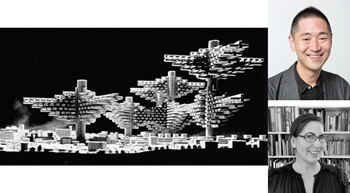 |
ONLINE JAPANESE TALK SERIES To discuss Japanese architecture, this talk series is organized around five concepts unique to Japan: MA, KANE, HAI/KYO, IN/EI, and SUKI. Renowned Japanese architects and scholars will speak at each symposium about their ideas on architecture and the works they have produced. This series offers a unique opportunity to deepen your understanding of Japanese architecture and its cultural concepts by featuring their insights, enriching your perspective on this distinctive architectural heritage through the lens of contemporary practice. The third session will discuss the concept of 「廃墟」 (HAI/KYO). HAI/KYO refers to ruins that embody the remnants of historical destruction caused by disasters such as earthquakes, fires, floods, and wars, while also symbolizing themes of rebirth, recovery, and the creation of new urban landscapes. *This lecture was originally scheduled to take place on January 9, 2025. However, due to the wildfires that tragically affected the city of Los Angeles, we missed the opportunity to hear the insights that Professors Oshima and Volk would share about HAIKYO: Destruction and Rebirth. JFLA is proud to announce its plan to offer this session once again, this time as an online panel discussion.
|
|
|
IN-PERSON LECTURE SERIES
Join us for a lecture by Kitamura Tokusai IX, the proprietor of a 300 year old artisanal silk textile shop in Nishijin, Kyoto. Kitamura Tokusai’s family has been designing and making silk textiles, or fukusa, for practitioners of tea since 1712. Their inventory of fabrics feature over 400 patterns of historical significance, many of which were expressly favored by the founders and most prominent devotees of Japan’s tea culture. In his presentation, Kitamura Tokusai will share stories about the intricate process of weaving silk textiles and recreating historical designs. He will also provide perspectives on how textiles that are made for use have played an important role in sustaining the livelihood of highly skilled weavers in Kyoto’s historic Nishijin area, which has been the main center for textile production in Japan for more than 1000 years. Many examples of Tokusai’s work will be on display at the presentation. Pottery with Tokusai’s design by overglaze artist DOI Makiko will also be on display.
|
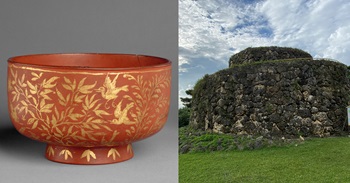 |
IN-PERSON LECTURE SERIES The islands known as Ryūkyū (modern-day Okinawa) have a long history as a cluster of statelets scattered over some 500 miles. From 1500, it became a largely unitary kingdom. Material assets were poor, but the people amassed wealth as middle-men traders. Just a decade after this consolidation, southeast Asia's great entrepôt of Malacca fell to Portuguese aggression. This brought to Europeans their first news of Ryūkyū, and tales were fabulous. But not until a whole century later did any Europeans land there and leave first-hand comments. This talk will look at the early fantasies and the later realities, while connecting these matters to Ryūkyūan history, and to the history of its large and powerful neighbour, Japan. This lecture is presented in partnership with the Yanai Initiative for Globalizing Japanese Humanities.
|
 |
JAPANESE CLASS Last chance to register! Spring in your step on the journey of learning Japanese.
|
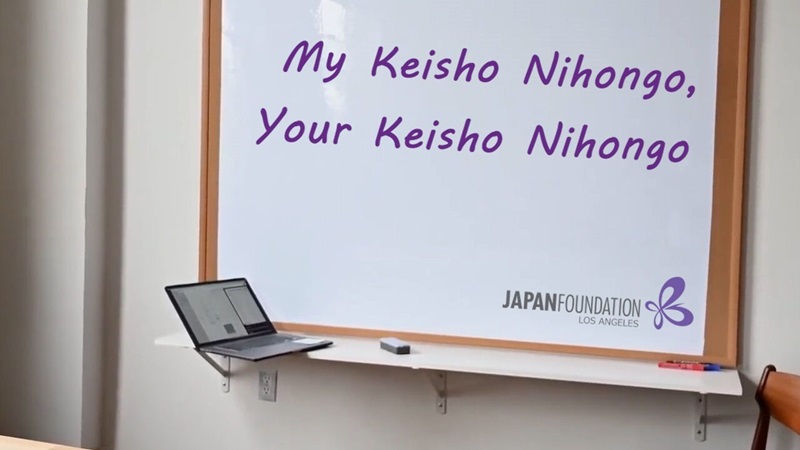 |
|
|
New Video Interview Series: My Keisho Nihongo, Your Keisho Nihongo Being a Keisho Nihongo/Japanese-as-a-Heritage-Language (JHL) learner, as opposed to a Japanese-as-a-Foreign Language (JFL) learner, can carry with it a set of unique challenges when there is a lack of local access to specialized education and community. Bicultural identity, especially in countries rich in diversity like the U.S., can factor into these learners' language acquisition and can be difficult for them to navigate. In this interview series, we talk with Keisho Nihongo learners about the personal challenges they faced and what helped them overcome those challenges. We hope that the advice, perspectives, and unique stories offered in these interviews will help and motivate other Keisho Nihongo learners throughout the U.S. William Kimmel: https://youtu.be/cQ-hhFGQUrk Luke Palermo: https://youtu.be/Y3EopxyplYs |
|
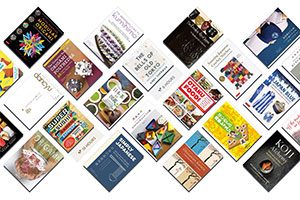 |
General Invitation to Join JF USA Digital Library We recently renewed and added many new books in coordination with our New York and Toronto offices for our patrons in the US and Canada. There have also been an uptick in the number of applicants as well, which shows that this is a very popular service. We have also updated the application survey and the confirmation emails are still going out once a week on Wednesdays by 6:30PM pacific time. If you register and do not receive a welcome email from us within a Wednesday of registering, please contact us so we can help you out. |
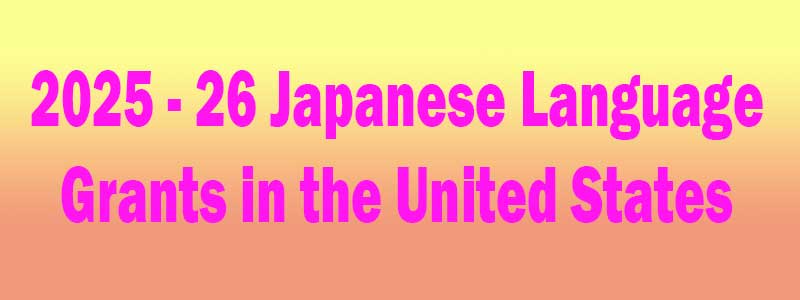 |
|
|
2025-2026 Japanese Language Grants Now Available! Grant for Nationwide/Statewide/Region-wide Events for Learners Grant for Nationwide/Statewide/Region-wide Projects for Teachers Grants for Individual Japanese Language Programs Japanese Teaching Material Purchase Grant Advocacy Support Letter Click Here to contact us and select Anything Related to Japanese Education. |
|
Japanese Language Education Update 135
This month, we’re excited to announce the latest volume of the Japan Foundation's Journal on Japanese-language Education, which features articles and reports authored by Japanese-language education specialist, professionals assigned abroad, and staff members working on the Japan Foundation's language education projects. The journal highlights discussions, practices, surveys, and research related to Japanese-language education across various countries and regions, providing valuable insights for those involved in the field. You can read the latest journal here and we will post a call for submission for the next volume in the June edition of our newsletter! A quick reminder: the deadline for our Salary Assistance Grant for Japanese-Language Courses is coming up on Thursday, April 10th, so be sure to submit your application before then if you’re planning to apply. We’ve noticed that many schools have yet to complete our survey, and we’d still love to hear from you! If you receive an email from us, please take a moment to share your feedback. Your input is essential for helping us assess the state of Japanese language education in the U.S. We appreciate your time and effort in responding to the survey. If you have any questions, Click Here to contact us and make sure to select Japanese Language Education Survey. Thanks again for your support! |
|